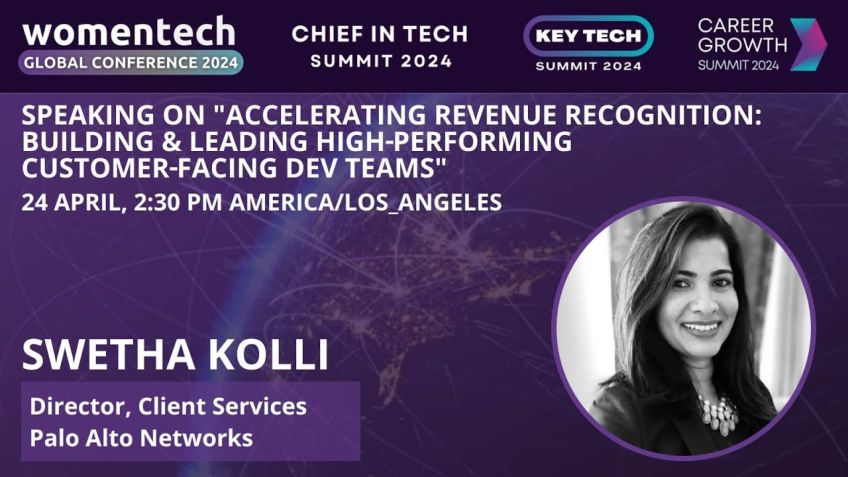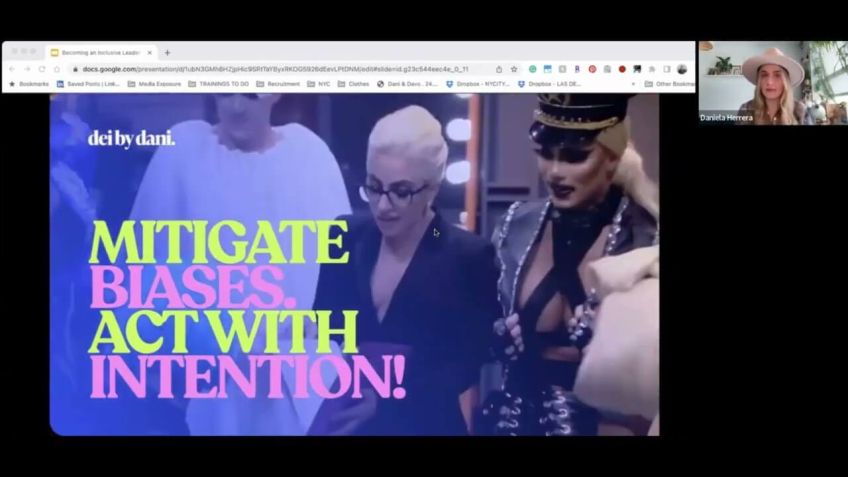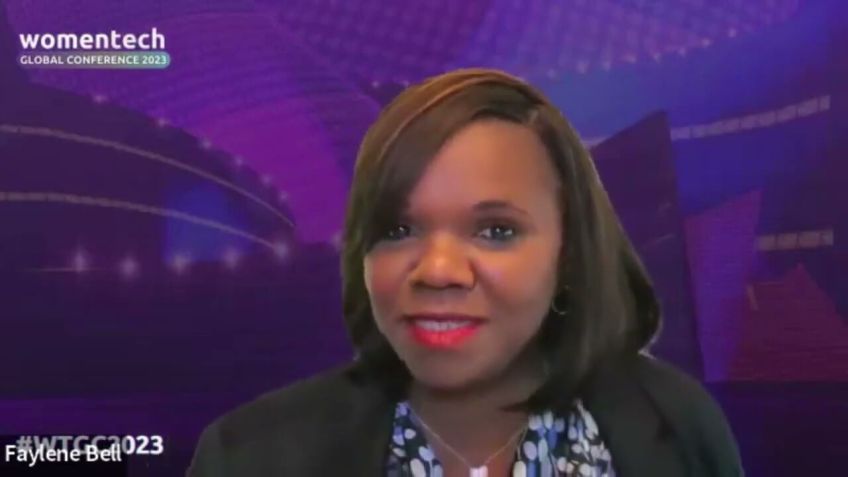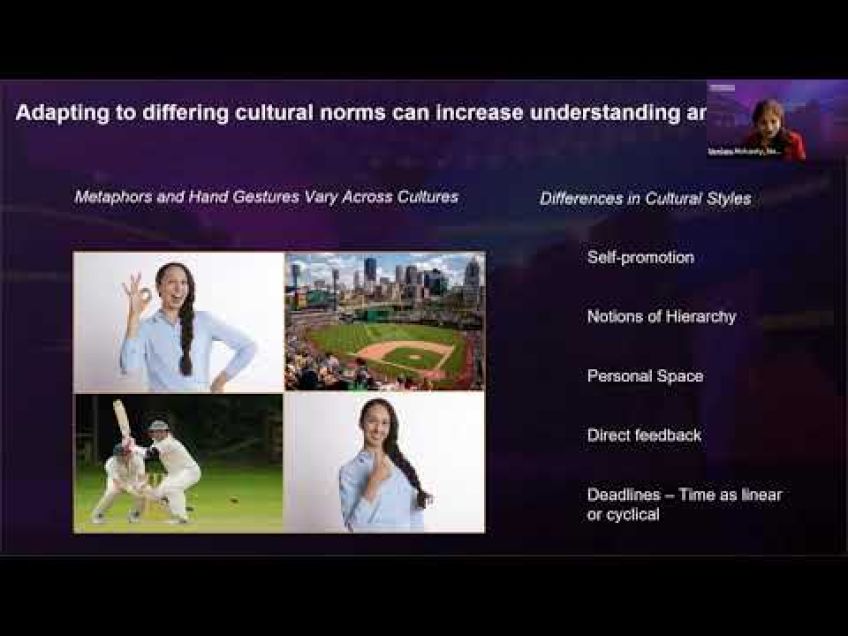How to Build a High Performance Team by Natalie Dawson
Mastering The Art of Hiring and Retaining High-Performance Tech Teams in 2022
Welcome! I'm Natalie Dawson, Executive Vice President and Partner at Cardio Ventures, and a staunch believer in building and retaining spectacular teams, especially within the technology sector. Over the past year, our company grew from no employees to over one hundred. Our success stems from a clear understanding of how to locate the foremost talent in today's marketplace, notwithstanding the unique challenges companies are currently experiencing.
In an era of radical labor market upheavals such as the ‘great resignation’ phenomenon, it is important to comprehend the hiring plan - how to attract, engage, and retain high-performance team members. To share these insights, I authored a book called Teamwork, which expounds on building high-performance teams. This piece will delve into technological team building and how to effectively align, develop, and transition an extraordinary team.
The Place of Alignment in Successful Team Building
Most people underestimate the process of hiring beyond the interview and onboarding stage. They fail to strategize on how to inspire and engage their workforce. Career planning is essential in preventing employees from jumping ship at the sight of an opportunity for growth elsewhere. Aligning employees requires clarity around three essential elements: the mission statement (the why), the company's future destination (the where), and the core organizational values. Understanding these components enables businesses to attract top talent, compete effectively in the marketplace, and greatly influence their workforce productivity and satisfaction.
The Role of Development in Employee Retention
After alignment, it is necessary to establish the steps required for development. Unengaged employees are often stuck in their roles with no clear progression path. By offering clear targets, and by measuring and rewarding performance appropriately, organizations can foster an environment for continual employee growth and development. Studies show that a clear career progression path motivates employees to put in their best efforts and remain engaged, contributing to the overall success of the organization.
The Importance of Transition in Employee Engagement
Transition comes in two forms: the move to the next development stage (promotion) and discharge from the organization – both beneficial for the business and other staff members. In today’s performance-driven cultures, high-performing employees often prefer organizations with clearly defined performance standards and value-based metrics. This clarity allows for successful transitions, be it a promotion or a departure from the organization.
How Alignment, Development, and Transition Interact in Team Building
- Alignment: Clearly articulate and demonstrate the mission of the organization, its future plans and core values.
- Development: Provide a clear definition for each role and a measurable performance plan that can guide employees through the role progression.
- Transition: Create clear criteria for promotions or exits to maintain a performance-driven culture that high performers will find attractive.
To learn more about aligning, developing, and transitioning high-performance tech teams, consider downloading a copy of my book, Teamwork atCardoneVentures.com/teamwork. It delves deeper into strategies for attracting, retaining, and transitioning high-performing tech teams. It’s a pleasure connecting with you, and I look forward to answering any questions you may have regarding building effective teams.
Video Transcription
Welcome. My name is Natalie Dawson. I am who is executive vice president and partner at a company called Cardio Ventures.And I'm an expert in hiring teams and finding team members and especially in technology, we built, built out a robust technology team over the last year and a half. In 2019, we had zero employees and today we have 100 and 21 employees. And my specialty really is mastering. How do you find the right talent in a marketplace like 2022 where it's unprecedented. You have situations like last year with the great resignation taking place. Now you also see a resurgence of people coming back into the workforce who maybe thought it was a great idea to leave their job in August and September of 2021 and have now since divided. Wait a second, I don't know how to run a business and I'm not exactly sure that my side hustle is going to make it to allow me to uh grow and scale without the structure of traditional employment. And so again, my specialty lies in really being able to create clarity for what the hiring plan is, how to retain great team members and ultimately how to transition those team members. I wrote a book called Teamwork and it's all about how you build a high performance team.
And so what I'd like to discuss with you guys during our time today and, and we open for questions, I can see it in the chat as well is how do you align, how do you develop and how do you transition a remarkable team? And when you're starting in the alignment place, most people start with this idea of OK, I'm gonna interview somebody and then I'm gonna on board them and that's the extent of their hiring strategy. That's the extent of the planning that they put into place. I need to find a warm body to help me solve these problems. I need to find a warm body to do the product roll out. I need to find a warm body to be a junior developer. But what they miss is what do you do to engage and inspire a junior developer to stay with you and not leave you for your competition because they see what the availability is for growth within the organization. And so career pathing is incredibly important in that transition phase.
And so as I talk about alignment development and transition, I think of this in this real and it's a difficult model. You first align somebody. We give them clarity around three key things that every single person needs to know, in order to properly align with an organization, a department and a reader, those three things are the mission statement. Why does this business exist? Why does this product exist help them understand the why if you cannot clearly and succinctly state in a very short amount of time, why you do what you do? Why the product is what it is, why the organization does, what it does, you are going to have a very difficult time attracting top talent because businesses who are competing for top talent today, they have clarity on those things and they can clearly articulate it because it grabs the attention of the potential workforce.
And the second piece of that is where are you going? It's not just about why you exist, but what is the opportunity? Where is the destination? If you do not have a destination? And that isn't clear to somebody, especially with the technology workforce again, as I've been interviewing hundreds of applicants over the course of just the last six months. As we've endeavored on building our team, everybody wants to be a part of something big. You have to remember that there is not a person that wants to think back and say when they're 85 years old and think, oh man, I'm really glad that I just played small my whole life, but I took small mediocre roles and that, you know, there just wasn't anything interesting or exciting about what I did.
Nobody will say that nobody has ever said that people want to be a part of something when they see an opportunity to grow. This idea of where you're going has to be so flush out. Maybe it's not every little minute detail because that can be difficult as leader to figure out all of those things. But the where you're going is critical and the last piece in this alignment phase before we get to development and transition. The last piece on alignment is what are the core values? How does the team operate inside our organization? We have every single team member before joining our team. Give us a presentation on how they align with our core values. It's a five minute presentation and it's given to anybody inside our leadership team. And what this does is it creates that buy in, it creates that commitment for bringing new team member to understand. Oh I'm stepping into this culture and this culture is clearly defined. This culture isn't, oh I'm gonna come and be a part of it and, and it's just loose and, and there's no structure. No, there, there should be a structure. If you're creating a team, you're a leader, you're creating a business and you're an owner, you should have clarity as to what you want your environment to look like. Are you friendly and approachable? Are you strict to the point? Is it results oriented or is it impact oriented?
All of those things? Have to be clear to a candidate to a high performer on the front end because here's the deal. By the time they enter your environment, by the time they are a full time employee of yours, you expecting that they're gonna change and become like your environment just because they're in your environment now does not work in 2022. That tactic, that tactic, that methodology no longer works.
What works is, hey, I was this person before. This is my contribution. This is what my belief system is and I am joining a place that is congruent with that. It's not, oh I was this before and now I'm gonna turn into or elevate into this. That's not what candidates are looking for. And the more that you surprise people and shock people about what your environment is because you aren't transparent on the front end, you're gonna have a result of high turnover and in an ideal thing, you keep your turnover as low as possible because you're really clearly stating on the front end.
So this is what I'm doing. Uh This is what you're getting yourself into. I equate this to dating when you are madly in love with somebody and you just skip the whole dating process, you meet them, you go on your first couple of dates, you're excited about them and then you just decide let's get married and then on the honeymoon, maybe a couple of days in after some rest and relaxation.
You're sitting there and you're talking to your significant other and your significant other is saying, wow, I'm so excited for us to be our lives together. I know we've just been being and known each other for a short while. But man, when we get back to town, I can hardly wait to be able to move out to the countryside and to have our farm and to raise our family and to start a family. Like I'm so excited and looking forward to that where the other two other is like, wait a second. I love living in the city. I have no interest in having Children. I wanna work 70 hours a week. I love going out to eat and my friends and social life there. That is what you do to your team members when you are not clear about what the department looks like and what the organization looks like. You are just surprising them on day one. And at that point, you're, you're already married, you're not have married. The, the parent can leave and go to somewhere else to work. But why not suss that out on the front end once you've done these things and I keep like making this kind of little movement because I have a graphic that shows in my book. The first step is alignment, then you move into development. Here's the deal.
Nobody is going to give their all every single day if they do not understand what's in it for them. Now, this is, this might be common knowledge to you, but as it relates to your team members, when you think about across the board, does every single one of your team members know what they need to do today on June 7th on a Tuesday afternoon. In order for them to go to the next level inside the organization, we have clarity on that. If they're a senior developer or if they're a junior developer, do they know what it would take to become a developer? And then from there, do they know from a developer? What it would take for them to become a senior? This isn't just for sales roles. This is especially important in technology roles because if I don't have a picture of where I'm going, if I don't have the picture of what the opportunity looks like, if I don't know what, what I'm putting all this work and energy and effort in for why am I? They showed every day, motivated and excited. I consult thousands and thousands of business owners each and every day. That's what our business does. And the number one complaint that I hear from employers is I can't find any great people.
And even once I find them after 60 days, they just go into this mold, they start off great. They interview so well. They're amazing and they're dynamic and then about that 40 to 60 day mark, they just kind of plateau and level off. It's because they don't see themselves in the future of the organization. They don't see what they need to do in order to become the next role. They don't understand what their trajectory looks like. And so a really clear target for every leader should be within 60 days of somebody being on board with your team or your organization, they should know what the next world looks like. They have a clear understanding of what it's going to take for them to develop, to get from where they're at to where they want to go. And if you don't have that in place and yet you're questioning why your team members are disengaged. That's gonna be your answer right there because they're stuck in what I like to call development predatory instead of growing and evolving. And I think that this wheel is like this ever evolving growing wheel that's very cyclical instead of that. It's like the beer has been jammed and they're just stuck. And when somebody is stuck, how they gonna get there all every single day, they don't know what the next step is. So, of course, I'm gonna be maybe a little bit negative.
I might have an attitude, I might withdraw from the problem because I really don't understand why that extra effort is gonna get me to the next level. My last piece. And again, I, I believe this transition is, is the most important piece because there's two types of transition there. OK, I a line I develop and then ideally I transition up so that I am able to be in that next role. But there's also the type of transition where hey, I try to align with the organization and I started to develop my skill sets, but ultimately, I'm not a kid. So then that person transitions out, you see like there's a wheel and then in some cases, somebody just goes out because they're no longer inside that organization any longer. And those forms of transition are still beneficial for the organization because the team needs to know, oh, what does it take for somebody to have to be fit here? And if you don't allow people inside your department or inside your organization to lead because they aren't a fit, you're sending a signal to high performers that you need, that you're just gonna be OK with B plus players, even though you're telling the high performers, I want a plus stars.
It's uh a lack of alignment. And when that lack of alignment takes place, you're really never gonna be able to have true, great ingratiating conversations with your potential top performer. Because as soon as they come into the environment, the first thing that they're gonna notice is, oh, there's only B plus team members here. I wanna be on, on the A team. That's why so many big tech firms get better uh talents than smaller firms because they know that the expectations are likely so much higher there and they wanna be on an A plus team. So how does somebody who's smaller, who doesn't have the names of the more recognized organizations still compete in this talent war that's going on? Well, you don't allow team members inside your environment. You are just sucked in the environment if somebody is below a A minus.
And you know, you're just like, man, this person is always late. This person is always coming up with excuses. That person is going to be one of the reasons why you're not able to get out even though the natural information could be. Oh, I'm gonna keep this person cause I'll need them. It's the exact opposite. You have to get rid of that person as quickly as possible. Barring, you know, they're not um they're not hitting their objectives but it can just be because of personality or um a different opinion really. Hey, they're not meeting their performance standards because the one thing that high performers love is performance standards. Think of it like somebody who makes music or somebody who plays sports professionally, high performers wanna know how many, let me date myself there but how many records they sell or what number they're at on the charts or for a basketball player, they wanna know their free throw percentage.
There's not a single person in the NBA that doesn't wanna know their free throw percentage. But now conversely, when you aren't holding yourself accountable to something, it's one of those things that you're go, you're gonna want a lot of freedom in and you're not really gonna wanna look at for the target. Maybe so for some people that could look like the example of stepping on a scale when you're like really into your diet and you're really into your exercising, you're gonna feel great about stepping on a scale cause you want to be measured on this thing. If you're not feeling so great about that, how you're contributing to, you know, what choices you're making, you're probably not gonna wanna actually look at that number because you know, it's not gonna be a number that you want equate this to this performance. Like when you are in a state of performing and when somebody in talent is in a state of performing, they want to be measured on their stats. They want to have clarity on their stats. The transition inside your organization has to be very stats based without the statistics, they're gonna be confused as to what the actual measurement is. And when confusion happens, you're the same here, Corals. We say confusion creates failure.
If I don't know what my target is, I don't have clarity on my metric. I don't know what my contribution is supposed to look like. That thing is going to fail because there's no, there's no clarity. But when there is clarity, all of a sudden you have success because once a target is known, you can put all of the resources and all the energy behind that cause you're thinking about your talents. How can you figure out the alignment piece? Have you clearly articulated why you exist where you are going and to find your culture as it relates to developing the numbers? Are you really honest about? Hey, this is where you're at and this is what it would take for you to get to the next level and then having very direct conversations with people about doing the things in order to get to the next level. And lastly, in the transition, how are you sharing with people, what the next level actually looks like, how they benefit from the next level, how they benefit from three extra hours when they're developing their skill set or learning something new. If you don't have the transition picture painted when somebody is on boarding, then of course, you're gonna run into disengagement with you because they're not really gonna know how to contribute more and they're not gonna have an understanding of what the bigger picture can look like for them to be able to contribute something much greater than just what they're doing that's in front of them today.
So with that, um I haven't been able to catch up on the chat here, but I would love to take any questions. It looks like we have just a couple of minutes. Uh I would love to connect on anything regarding teambuilding, uh hiring, firing, rewarding team members. This is really my only a genius. Um But for those questions that we can't get to, please, I would love to connect with you. Please feel free to download a copy of my book. It's um free, free for you guys. If you go to Car and vs.com/k, I really dive into much deeper in detail as to what interviews would be asking them. Uh And what structure the interview should go in in order to discuss out the right candidates. Uh all the way through how you fire somebody, how you develop them, et cetera. So my book cars.com/teamwork, you can get a free copy ship to your house today. We would love to be able to provide that for you uh When you type in your book. Oh, yeah, the book is called Teamwork um Cardone ventures.com Board. So and work um favorite team building exercise. Uh My favorite single exercise would be I take uh on a monthly basis. We do a cool celebration inside our office where we care for things. However we like can do all the normal birthday stuff, but then we also ask the person of a handful of questions. One of them has been um that's been really helpful is what is the most impactful age that you have?
And as soon as you're in a team environment with somebody sharing something that is more personal, that really creates a level playing field. Like man, 31 was my favorite age or 16 was my favorite age. And this is why it takes just the professional stuff outside of the work. And it reminds you, oh my gosh, I'm talking to somebody who also had these weird experiences at 16 years old and, and they were able to grow and develop through them. We also do things like holiday celebrations where um for Mother's Day, we did baby photos and we had to, we played a game where everybody guessed which baby was a good member, which is hilarious and a big proponent of green moments and cultures and environments where you just don't feel like you're working with colleagues, you feel like you're connecting with other people.
And that side of the business is incredibly important to navigate as you're also doing everything you can each and every day to drive a result. I'm a very serious person. I talk about numbers and metrics and I'm very intense all the time. But then there are these moments that as a leader, it's my responsibility to create inside our environment. It just allows people to be people and to connect in different ways. So with that, I believe I am over my time, I've appreciated connecting with you guys. I would love to connect with you more. Um I guess I can keep going until they shut me off. So what is the deal list. Um As people begin to return to office after COVID, there are some ways to attract staff that speaking, they will always work in a hybrid manner. You know, Elon Musk just came out just last week and said, if you can continue to work at Tesla, you need to be expected to be in the office. I think that it takes a strong leader with a strong vision to set that challenge. Why are we working in office versus why are we not working in office? And what is the value if we choose it to do hybrid for us? Our in office component is incredibly important.
We consult businesses every single day in our trenches have grown like crazy which makes us have um visibility challenges in a hybrid or remote work environment with our tech roles. Though it's it's fairly difficult for us to be competitive in tech with virtual or with demand in person work. So our leader is in person, but we have made um all of our technology development roles virtual. And I'm I'm pleased with that decision because there there's a lot more transparency when somebody is building something. Then let's say someone who's doing consulting work um that has a lot more potential flexibility. But I think it takes a strong leader to say I have an opinion.
I have a stance, this is what we're doing and then to follow it across the board. If the leader is like, oh some people can work hybrid, others can be fully remote and others need to be in the office. I think that it causes confusion in the environment. I really appreciate you on less ST for you saying if you expect to have a job here, you better show up in the office. And I also respect other organizations who very clearly said you will never have to work in an office ever again if you continue to choose to work here because we are going fully remote for the future. I don't think that there's a right or a wrong answer because businesses demand different things of their numbers and of the type of work they're doing. But I do expect that somebody who is willing to put financial risk at stake in order to grow the business and to leave the business, that person needs to have clarity as to what the uh structure is to look like. And then we need be decisive around the top. We did. Welcome back Wednesdays. It was a dedicated day at the office with predictive socialization activities. We discuss that day. I love that. The more you can get your team involved with stuff like this, the better, right?
The more you can have it be if it doesn't come from Natalie, it doesn't come from this like level of read. The the baby photos was an idea from one of our team members. I know this Thursday, we have a, a dad joke, uh uh like karaoke events taking place that is very much team led. And again, when it's led by the team, your team is likely going to be more participative in it versus when it's just coming from top down um ideology. And the more leaders do participate in those things and push those things forward. Obviously, the more priority that the rest of the team will see that this is important and then we should get involved. But if leadership isn't involved and it's just a team idea and that's where, you know, the challenge is. So with that, I appreciate each and every one of you would love to connect further. Uh It would be an honor if you downloaded two more. I think that you would be very surprised at some of the hiring, attracting, retaining and hiring practices that I have been in the trenches, figuring out in order to grow our business, that can also be beneficial that we can leverage across your businesses in your teams in a different style.
Happy to connect on any social platforms that you active on. Social model. Workman recently got married to some places at STA but I appreciate your time. Enjoy the rest of the conference and in order to check out the book, go to paras.com/teamwork.





